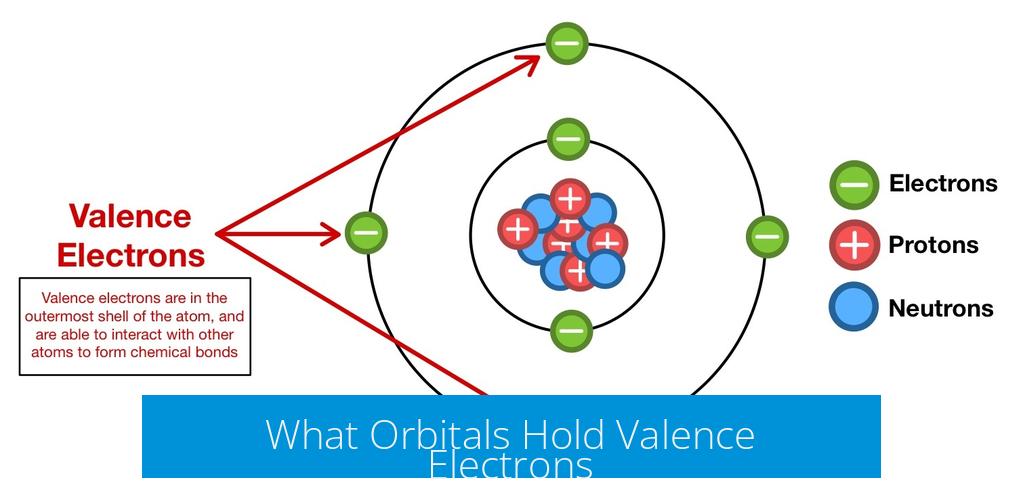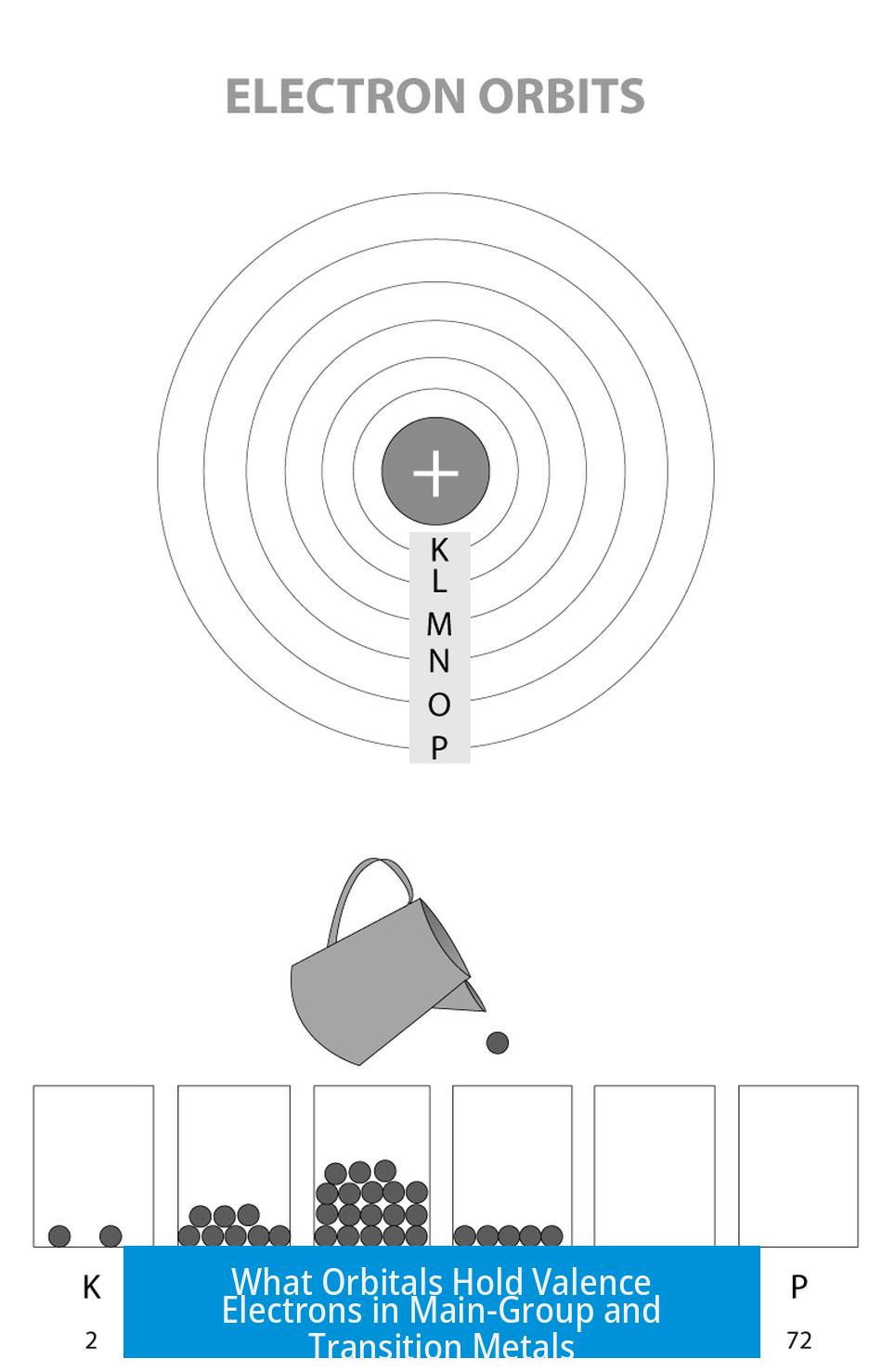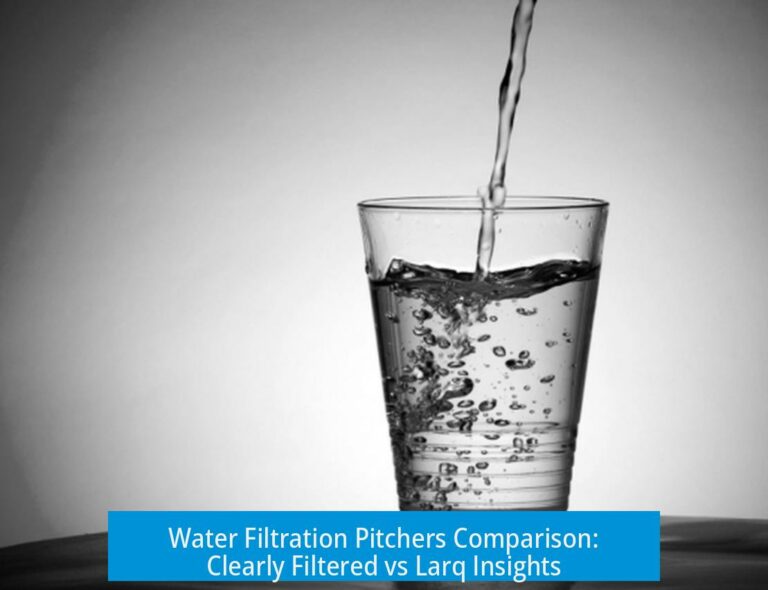What Orbitals Hold Valence Electrons?

Valence electrons occupy the outermost energy shell with electrons, called the valence shell, typically filling the s and p orbitals. For d-block (transition) elements, valence electrons can reside in both the outer s orbital and the inner d orbitals of the preceding shell.
Understanding Valence and Core Shells
Atoms have shells or energy levels where electrons reside. The valence shell is the highest energy shell that contains electrons. Electrons here define chemical reactivity and bonding behavior. Shells beneath the valence shell are called core shells. Core electrons typically do not participate in bonding because they are more tightly bound to the nucleus.
Orbitals of Valence Electrons in Main-Group Elements
For main-group elements, valence electrons mainly occupy the s and p orbitals of the outermost shell. For example, in carbon (atomic number 6), valence electrons fill the 2s and 2p orbitals. These orbitals determine the element’s chemical properties and bonding patterns.
Valence Orbitals in Transition Metals
Transition metals have more complex valence electron configurations. Their valence electrons can be found not only in the outermost s orbital but also in the (n-1)d orbitals, which lie just beneath the valence shell.
- For example, in the 4th period, valence electrons include those in the 4s orbital and the 3d orbitals.
- Electrons can shift between the (n)s and (n-1)d orbitals depending on energy states and bonding environments.
This flexibility means transition metals can have variable numbers of valence electrons, impacting their chemical behavior and oxidation states. The 4s electrons are often lost or excited before 3d electrons during bonding or ionization, illustrating their involvement in valence interactions.
Summary Table: Valence Electron Orbitals
| Element Group | Valence Shell Orbitals Holding Electrons |
|---|---|
| Main-Group Elements | Outer s and p orbitals (e.g., 2s, 2p; 3s, 3p) |
| Transition Metals (d-block) | (n)s orbitals plus (n-1)d orbitals (e.g., 4s and 3d) |
Key Takeaways
- Valence electrons occupy the atom’s highest-energy shell with electrons—the valence shell.
- Main-group elements use s and p orbitals in their valence shell.
- Transition metals can also use inner d orbitals plus outer s orbitals as valence orbitals.
- The number of valence electrons in d-block elements can change due to electron excitation between s and d orbitals.
Which orbitals hold valence electrons in main group elements?
Valence electrons are found in the highest energy s and p orbitals of the outermost shell. These orbitals define the valence shell.
How do valence orbitals differ in d-block (transition) elements?
In transition metals, valence electrons can occupy both the outer s orbitals (like 4s) and the inner d orbitals (like 3d). The number of valence electrons varies with electron excitations.
Can valence electrons be found in d orbitals for elements beyond first-row transition metals?
Yes. For heavier transition metals, valence electrons may occupy (n-1)d orbitals such as 4d or 5d, along with the corresponding ns orbitals.
Do core shell orbitals hold valence electrons?
No. Core shells contain lower energy orbitals, and electrons there do not usually take part in chemical reactions as valence electrons do.
Why is the valence shell called the highest energy shell?
Because it holds electrons with the highest energy level in an atom. These electrons are most available for bonding and chemical reactions.





Leave a Comment